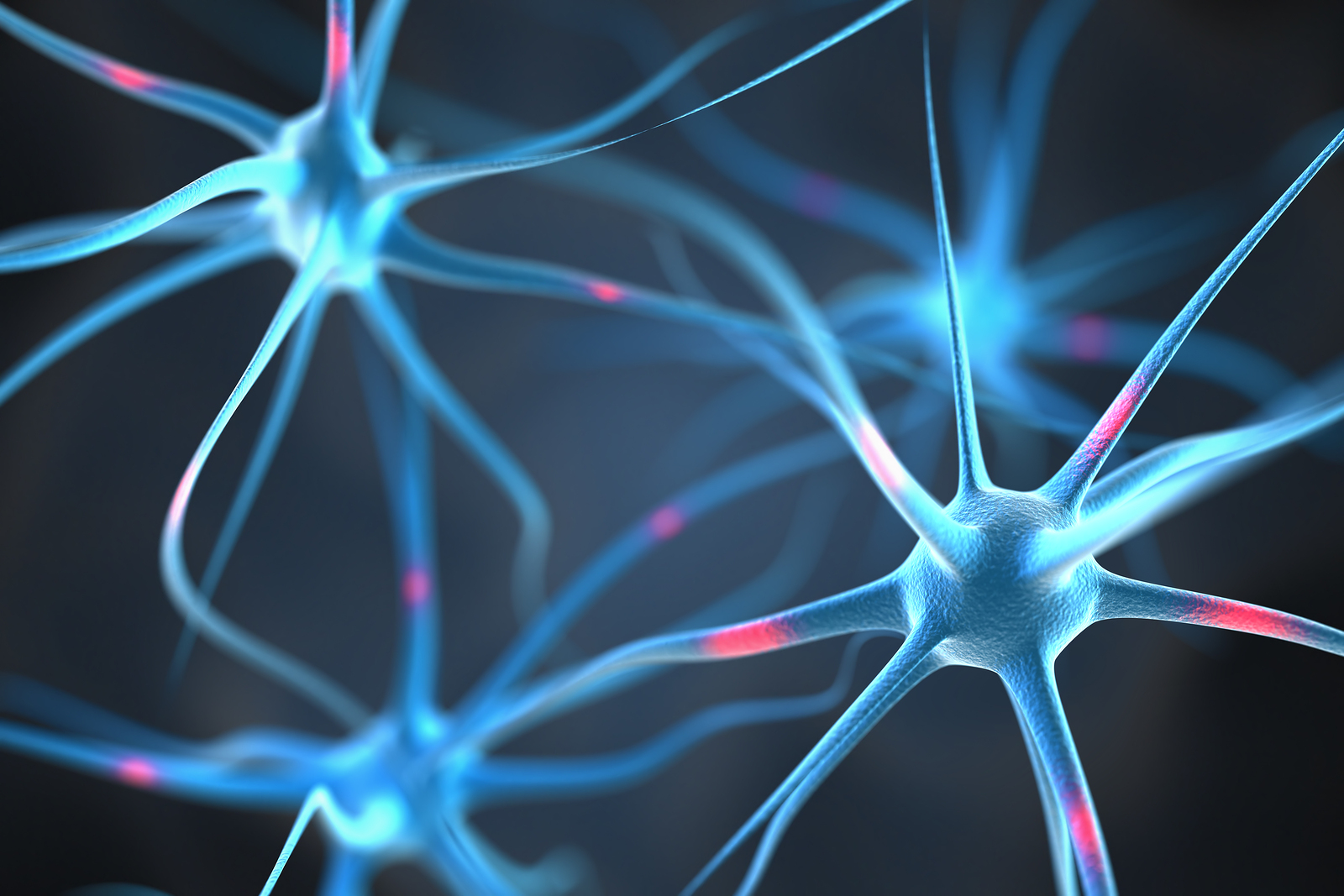 As Mayo Clinic notes, according to current thought, the two main causes of addiction relate to genetics and the environment. Once a person initiates into drug use, the presence of certain genes (inherited traits) may hasten that person along the road to addiction. Environmental factors that play a role in the onset of substance abuse include a person’s family’s beliefs and attitudes as well as the influence of peer groups around the person. Some researcher and scholars believe social influences are also a main contributing cause to addiction. The ways in which society can contribute to the development of substance abuse is making the drugs available, stigmatizing drug use, and criminalizing drug-related behavior.
As Mayo Clinic notes, according to current thought, the two main causes of addiction relate to genetics and the environment. Once a person initiates into drug use, the presence of certain genes (inherited traits) may hasten that person along the road to addiction. Environmental factors that play a role in the onset of substance abuse include a person’s family’s beliefs and attitudes as well as the influence of peer groups around the person. Some researcher and scholars believe social influences are also a main contributing cause to addiction. The ways in which society can contribute to the development of substance abuse is making the drugs available, stigmatizing drug use, and criminalizing drug-related behavior.
As there is no short answer to the complex question of what causes addiction, this article looks at specific facets of this issue, including how drugs work in the brain (i.e., the role brain complexes and chemicals play), the role of genetics, environmental factors, and societal forces.
How Addiction Works in the Brain
Scientific research confirms that the brain plays a significant role in the development and maintenance of drug addiction. But how so? As Alila Medical Media explains, research on the brain’s reward system provides insight into how addiction works. The reward system in each human brain is designed primarily to ensure that survival activities, such as eating, drinking fluids, and reproduction, continue. When a survival activity occurs, the brain’s reward system provides the individual with a pleasurable feeling to motivate the continuation of that behavior, in the interest of the perpetuation of the species. Drugs of abuse can be thought of as master manipulators of the brain’s natural reward system; drugs essentially hijack the evolutionary reason for pleasure and exploit it for maximum enjoyment.
 For instance, a major reward pathway in the brain involves a complex known as the VTA, which communicates with the limbic system and frontal cortex. Pleasure is experienced when the neurotransmitter dopamine travels along this pathway. Most drugs of abuse cause an increase in the level of dopamine in this reward pathway. The result is a more intense level of pleasure than would normally be experienced during a survival activity, like eating. The brain naturally removes dopamine from the synapses in the reward pathway, as a way of conserving it for later use. However, some drugs prevent the reuptake of dopamine, which results in a prolonged and intense euphoric feeling.
For instance, a major reward pathway in the brain involves a complex known as the VTA, which communicates with the limbic system and frontal cortex. Pleasure is experienced when the neurotransmitter dopamine travels along this pathway. Most drugs of abuse cause an increase in the level of dopamine in this reward pathway. The result is a more intense level of pleasure than would normally be experienced during a survival activity, like eating. The brain naturally removes dopamine from the synapses in the reward pathway, as a way of conserving it for later use. However, some drugs prevent the reuptake of dopamine, which results in a prolonged and intense euphoric feeling.
Since dopamine is not intended to work this way in the brain, over time, the reward system becomes damaged. At this point, an individual may no longer experience pleasure when eating, drinking, or engaging in sexual activity; pleasure may only arise during substance abuse, which is responsible, in part, for the way those who are addicted to drugs can whittle their lives down to little more than doing drugs. But over time, the brain will eventually stop rewarding drug use because the reward complex has become too damaged from overexcitement. At this point, a person is especially vulnerable to experiencing a drug overdose. Research findings on the relationship between dopamine and addiction may provide the groundwork for future targeted medications that can alter the impact of drugs of abuse on the reward pathways.
Some researchers, such as professor Barry Everitt of the University of Cambridge, believe that research into dopamine in the brain does not go deep enough into the real nature of addiction. As Everitt notes, of all individuals who use drugs, studies show that only 15-20 percent will become addicted. Everitt believes that a person’s genetic predisposition to impulsivity plays a fundamental and significant role in the development of substance abuse. Can impulsivity, a quality typically associated with personality, really be a root cause of addiction? A study on cocaine use in rats suggests that this is the case.
The study on impulsivity in rats isolated rats that had this genetic vulnerability in their brains. These rats were then given cocaine and compared to a control group without this gene. The rats that were genetically predisposed to act impulsively lost control over their cocaine consumption levels compared to the control group. The same phenomenon has been found to occur in humans. Everitt believes that research on the genes responsible for impulsivity can help to create future therapies and medications that can help to prevent substance abuse. Such research, according to Everitt, can also support the development of medications to treat, and maybe possibly cure, substance abuse. Currently, there is no cure for addiction.
Is There an Addiction Gene?
Researchers who work to identify addiction genes are essentially trying to find neurological evidence to support the phenomenon that some people become addicted to drugs whereas others do not. These individuals may have a harder time stopping drugs and/or experience severe withdrawal symptoms when they do so. There must be a reason, and it is thought that genes must provide part of the answer. In fact, according to the American Psychological Association, at least 50 percent of a person’s vulnerability to addiction is tied to genetic factors, yet uncertainty as to which genes are involved in addiction persists.
Everitt, as discussed above, proffers that genes related to impulsivity are among the most important players. Other genetic researchers have found that individuals with a deficient amount of D2 receptors (a type of dopamine receptor) may have a greater propensity to become addicted to drugs. Research in this area could one day translate into a D2 medical screening tool. For instance, such a tool could stop a pain management doctor from prescribing a highly addictive narcotic to a patient with a propensity for addiction. For that particular patient, alternative therapies could be recommended. In fairness, however, it would also help if non-narcotic, non-addiction-forming medications could be developed. Screening tools have the propensity to change the entire face of medicine and pharmaceutical development.
Research shows that addiction runs in families because genes are passed down. Typically, research studies focus on large families with members who have experienced addiction. An early step is to compare the DNA sequences of family members who face addiction against those who do not. When researchers isolate the genes of affected individuals (i.e., the ones that the family members who drink/use drugs have in common), they have a list of possible causal genes that can then be individually studied. Due to the significant role environment plays in the development of addiction, researchers also study genetically related non-human animals.
To illuminate some of the potential genes involved in the development of addiction, consider studies that have found:
- Individuals who experience addiction more commonly have the A1 allele of gene DRD2 (a dopamine receptor gene) compared to individuals who maintain abstinence.
- Individuals who have two copies of the ALDH2 gene variation rarely experience alcoholism.
- Individuals who do not smoke cigarettes are more likely to have an allele of the CYP2A6 gene which makes them experience nausea and dizziness if they smoke.
- Mice that do not have gene HTR1B, a serotonin receptor gene, are more attracted to alcohol and cocaine than those who have this gene.
- Mice that have relatively low neuropeptide Y levels consume more alcohol in studies compared to those with higher neuropeptide Y levels.
- Mice without the CREB gene have less risk of developing a dependence on morphine compared to mice with this gene.
Even a cursory review of theories of genetics and addiction reveals a complex relationship. There are genes (or absent genes) that can ramp up the potential to develop addiction as well as protective genes (or absent genes) that can sharply decrease the risk. Within the field of medicine overall, there is a trend in research to uncover genes responsible for different types of diseases. If the research is successful, in the future, a trip to a family doctor for a routine visit will include genetic screening as a matter of course, like blood work today.
Do Mental Health Disorders Cause Addiction?
The short answer is “probably not.” Individuals who abuse drugs (i.e., have substance abuse disorders) and have a co-occurring mental health disorder are considered to have a dual diagnosis. According to WebMD, research suggests that at least 60 percent of people who have either condition have both. The prevalence of co-occurring disorders has led researchers and clinicians to question if they have a causal relationship. However, it seems more likely that co-occurring conditions have a high correlation without being causally connected, or they emerge from the same brain condition. One theory posits that some mental health disorders and substance use disorders are actually a single disease that is manifesting symptoms in different ways.
Environmental Factors
Rather than be locked in a “nature versus nurture” debate, many researchers agree that both nature and nurture play critical roles in the development of addiction. Environmental factors involved in addiction are those that stem directly from a person’s immediate surroundings. A person’s environment can increase the likelihood of addiction (i.e., present single or layered risk factors for addiction). To better understand these risk factors, researchers and scholars look at different domains in a person’s environment, such as family, peers, community, school, and work.
In the family, there are several possible risk factors for drug use and later addiction. While divorce alone is not a risk factor, conflict between family members can be. That conflict can occur in any combination, such as between parents, between parents and children, or between siblings. The child need not be the specific target of conflict in order to be affected by it. Regarding attitudes toward drugs, research shows that parents who have permissive attitude toward drug use can create a risk for drug use among their children.
Children from families who move homes often, be it due to work (such as the military) or lack of work, face an increased risk factor for drug use. Researchers have found that children in these circumstances have to continually make new friends, and doing drugs is one of the easiest, albeit most dangerous, ways to do so. These children may feel dislocated and turn to drugs to cope with a feeling of not having stable roots in one place. Once these children experience a community feeling, even if it is around drug use, they have a significant incentive to continue drug use, which in turn is a risk factor for leaving high school before graduation, unemployment, and risky sexual practices. In this way, children who start out at risk for drug abuse can end up at risk for many experiences that can amount to a significantly lower level of life satisfaction as they age.
Peer groups, especially in adolescence, can increase the risk of substance use. Peers who use drugs or have permissive attitudes toward drugs drive up the likelihood that a person will initiate into drug use. Individuals who fall into drug use with their peers are likely to continue that activity because it is difficult to find new friends, and most people care about their friends and do not want to leave them.
At the community level, research shows that living in a neighborhood that has a permissive attitude toward drugs and crime increases the risk of drug abuse. Communities that do not have a healthy core or that are disorganized can make residents feel disconnected from one another and the neighborhood, which presents a risk factor for drug use. For this reason, living in an urban environment can itself be a risk factor for substance abuse.
In school, research shows that children who fail at the higher elementary school level are at a greater risk for drug use. Failure at this stage is a manifestation of personal problems, trouble at home, or possibly a mental health disorder. Children who either do not attend school or show up but do not follow the curriculum are at risk of turning to drugs in order to plug into something that feels good or offers them a connection. As friend groups build around drug use, the child’s drug use can become entrenched, which leads to an exacerbation of trouble in school (i.e., attendance and performance).
In older persons who are of working age, work environment can influence them to initiate into alcohol and other drug use. Although the focus of work is ostensibly to be productive, the culture of any given workplace may be to socialize with the help of alcohol and/or other drugs after work and/or over the weekend. A workplace that has a permissive attitude toward alcohol and other drugs presents a risk factor for substance abuse. Many movies center on this phenomenon (albeit often in the extreme), such as The Wolf of Wall Street, which highlights how the rush of earning a lot of money can encourage other thrill-seeking behaviors, such as drug use.
Social Factors: Impact of Drug Laws
 In literature about the societal causes of addiction, discussions of environmental factors and socials factors often bleed into one another. Suffice it to say for purposes of this discussion, social factors are those that exist beyond one’s local community.
In literature about the societal causes of addiction, discussions of environmental factors and socials factors often bleed into one another. Suffice it to say for purposes of this discussion, social factors are those that exist beyond one’s local community.
As drug laws occur on a nationwide scale, drug policies and laws can be considered social factors that can influence drug abuse rates. A common question among researchers is whether criminalization of drugs perpetuates their use. The example of Portugal’s drug policy now provides the world with some insight into the impact of a country’s drug laws over its citizens’ drug use.
In 2001, Portugal abolished all criminal sanctions that had formerly been in place against personal use of drugs, including marijuana, heroin, cocaine, and methamphetamines. According to TIME, Portugal’s new approach is a significant improvement compared to the old criminalization approach. In Portugal, individuals who abuse drugs are offered treatment instead of being sent to jail. According to research that looked at the first five years of the new system, by every metric, Portugal’s drug problem had improved considerably.
After decriminalization, the rate of illicit drug use among teens had dropped, the number of new HIV infections caused by needle-sharing among intravenous users dropped, and the number of individuals who sought drug treatment services more than doubled. Compared to the rest of the European Union, the Portuguese had the lowest lifetime rate of marijuana use in 15+ age group (10 percent). In the US, the comparable figure is around 39.8 percent. To more fully illuminate the difference, consider that more Americans have consumed cocaine than Portuguese have consumed marijuana. Another impressive statistic from Portugal is that the rate of heroin-involved fatal overdoses decreased by more than half after drug decriminalization. The new approach also impacted treatment. In addition to more people entering treatment, those engaging in substitution therapy, such as methadone and buprenorphine (reserved for persons recovering from opioid abuse) therapy, increased from 6,040 individuals to 14,877.
America maintains a decidedly anti-drug stance. However, this country has some of the most severe drug conviction penalties in the world, alongside the highest rates of abuse and overall incarceration levels. The Portugal example suggests that US drug laws may, however unintended, promote drug addiction. Portugal’s approach may not be a realistic model for the US, but it sheds light on how governmental policies may be impactful on drug use in undesirable ways.
